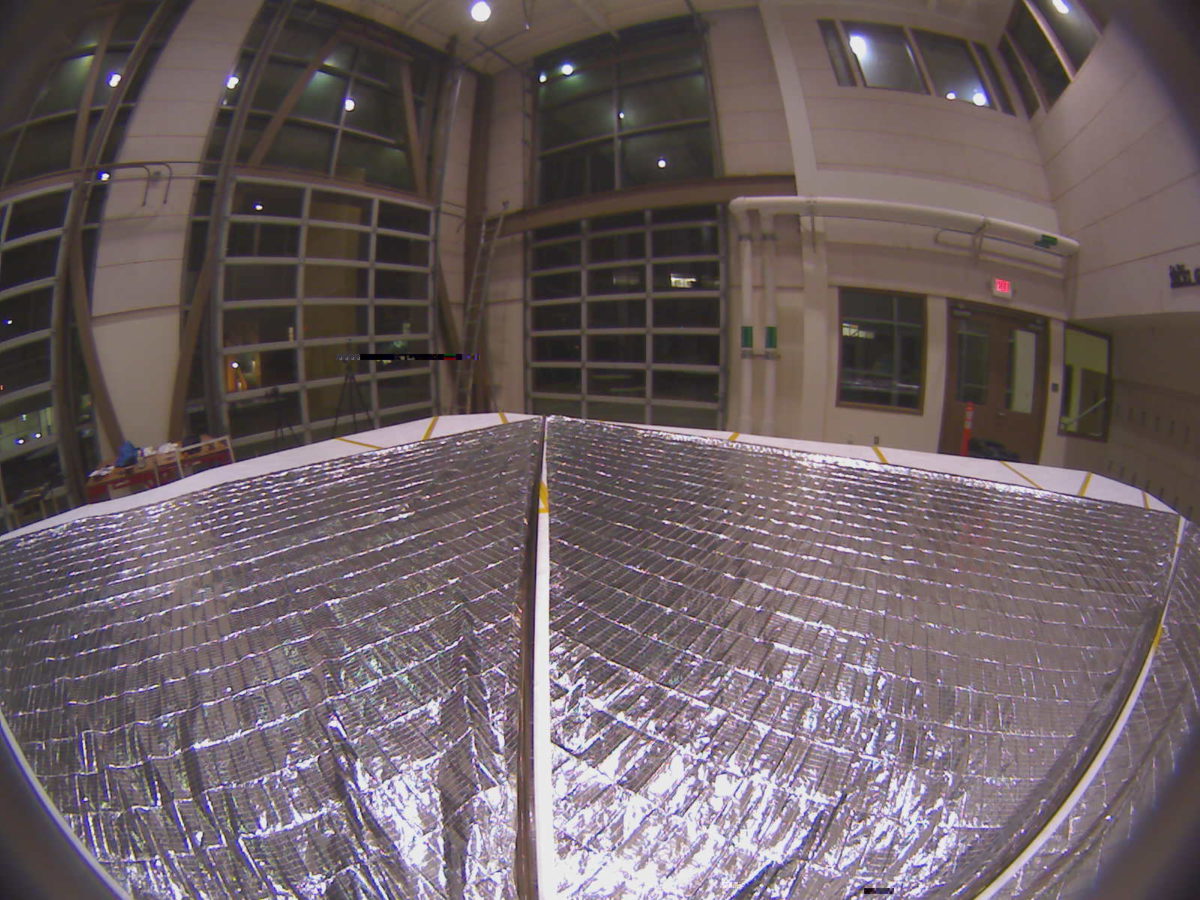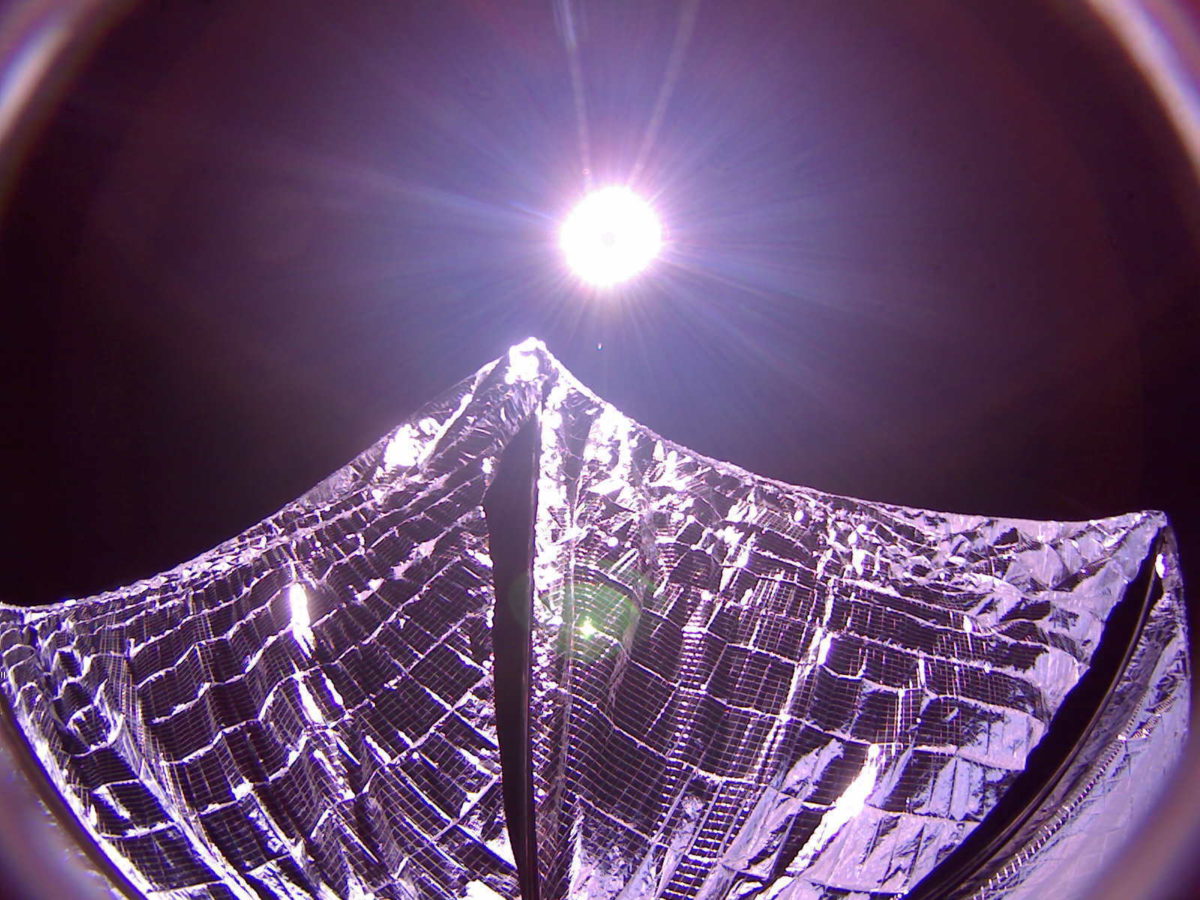Jason Davis • Mar 14, 2016
Rulers in space! LightSail 2 equipped with boom fiducials
Last year, we were both thrilled and surprised when our first and only sails-out picture from LightSail 1 came back from space. Thrilled, because look at that!—a decades-long dream of The Planetary Society was fulfilled, with more excitement yet to come. But we were also surprised, because the sail didn't quite look the way it did during our deployment tests. In space, LightSail 1 wasn't taut like a kite in a summer breeze; rather, it was a little floppy, possibly bending upward in the camera frame. As a result, the obvious question was: Were the sail booms fully extended?
There was no way to tell. We couldn't use image processing to accurately "flatten" the sail and compare it with testing photos because we didn't know how much the sail was flexing when the picture was taken. We also didn't get a chance to download more pictures or try extending the booms farther. A radio problem prevented further communication with the spacecraft, and LightSail 1 reentered the atmosphere about a week later.
For LightSail 2, we want to do better. First of all, the spacecraft's software will now store the number of motor "counts" recorded during deployment. These counts are a dimensionless number that increment as the motor spins, until the they reach a pre-defined value. But that's only one data point. What we really need is an in-space ruler to validate the booms are all the way out.
That's where fiducials come in. In imaging, fiducials are visual marks used as a point of reference. When you see a photo of a small insect sitting next to a ruler, that's a fiducial in action. Recently, the LightSail team added fiducials to the spacecraft's sail booms. These markings will help us determine how far out the sails are.
And they look pretty sweet! Ecliptic Enterprises Corporation included our logo for good measure. Take a look:
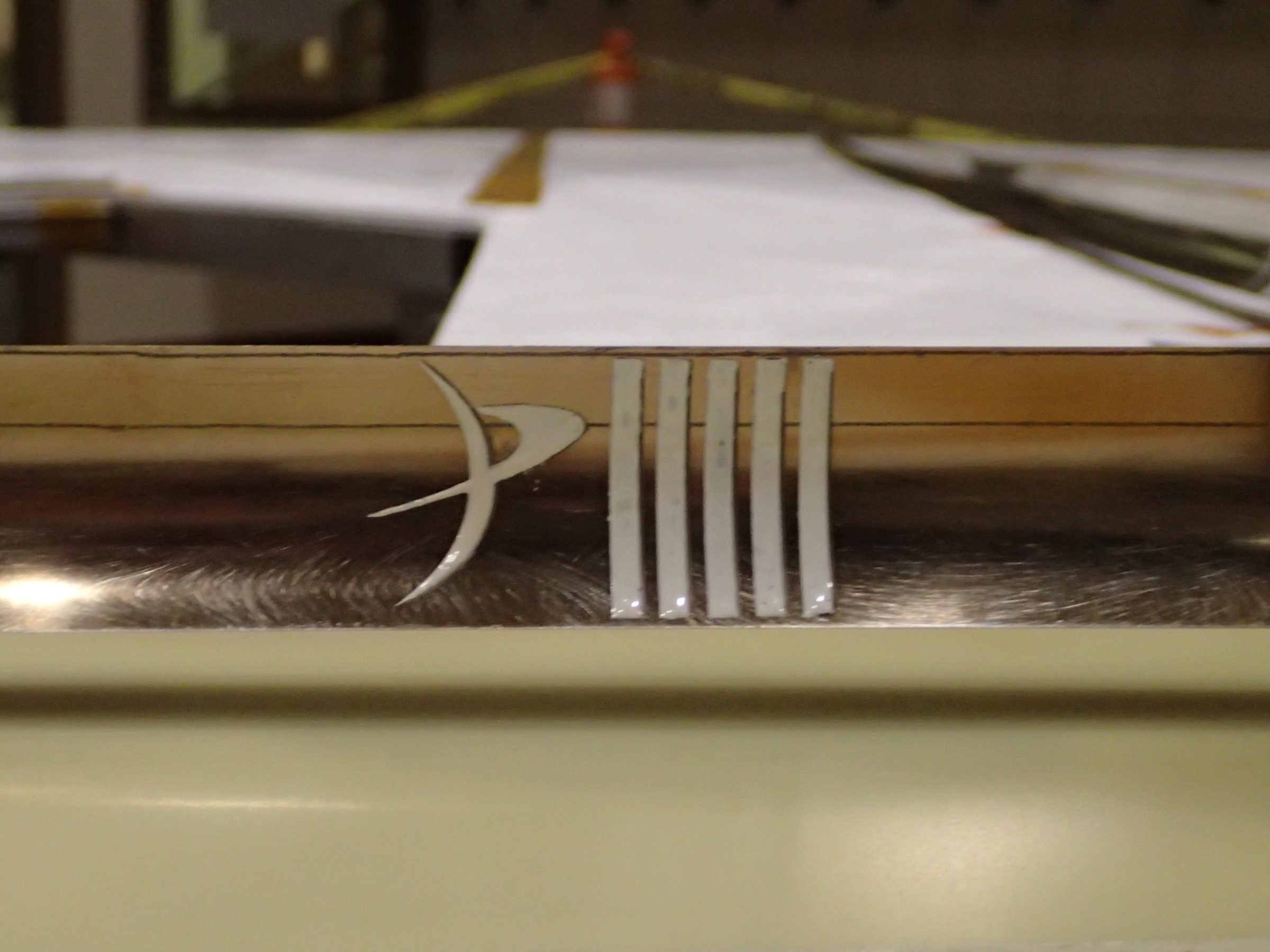
You're looking at the side of a sail boom marked with white epoxy ink to provide extra contrast that will be (relatively) easy to spot with the onboard cameras. I say "relatively" because our cameras have fairly low resolution, and there are a lot of extreme colors in our images: the blackness of space, the silver sail, the gold booms, and possibly, the Earth or sun.
The five tick marks don't signify anything in particular—in total, they're about an inch wide, lengthwise, on the booms. Stephanie Wong of Ecliptic tells me the team chose the tick mark design over a single, inch-long ink block to reduce the likelihood the ink would peel off in one big chunk after being wound so tightly inside the spacecraft.
The team added six fiducials in all. There are two fish-eye cameras that sit on opposite sides of the spacecraft. When the sail is deployed, each camera sees one boom more or less in the center of the frame, with one or more adjacent booms highly distorted near the edge of the image. That means our best chance of seeing any faraway fiducials comes only on the two booms that align with the cameras.
So, every boom has a fiducial with a Planetary logo that completely shows when the booms are fully deployed. And on the two booms that align with the cameras, there's a second fiducial at the halfway mark, which looks like this:
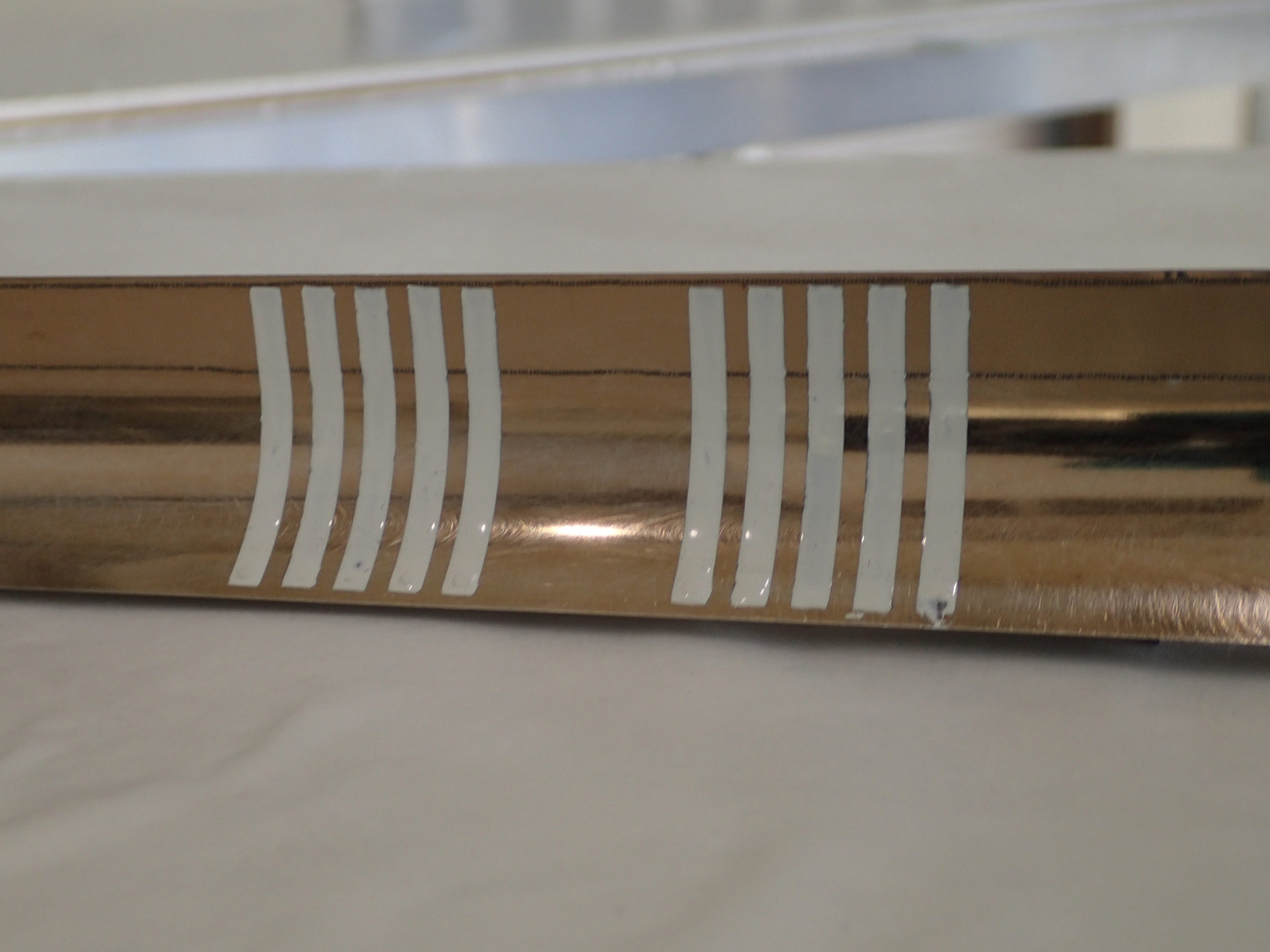
The extra set of tick marks and lack of logo differentiates these two fiducials from the other four, and makes them easier to spot at a distance.
You may be wondering why the team didn't add even more fiducials. The main reason is that the ink adds thickness. The booms are 4 mils thick (a mil is one thousandth of an inch), but the epoxy adds up to 25 mils extra in some spots—a seven-fold increase. And the four, 4-meter-long booms must wrap into a coil less than 4 inches wide, there isn't a lot of room to spare.
Here's Ecliptic's final fiducial schematic, and a corresponding table:
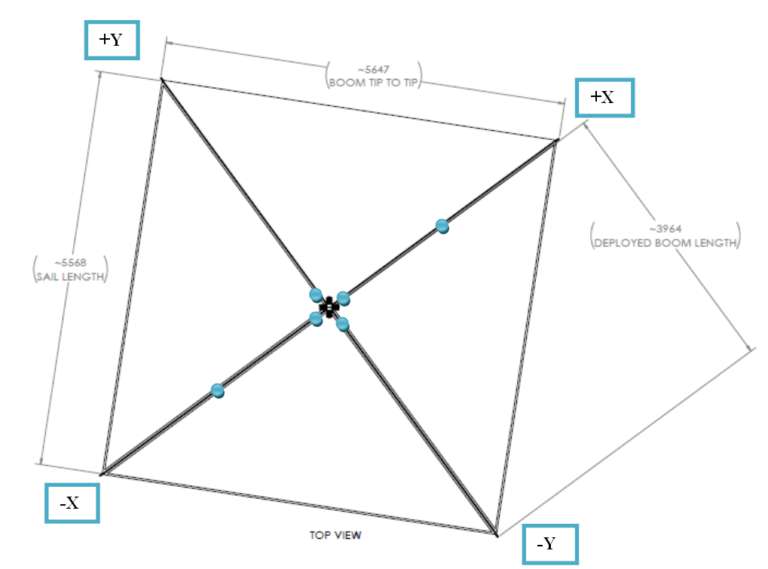
| Axis | Fiducial | Distance to spacecraft | Boom thickness | Boom thickness with fiducial at thickest point |
| -X | Secondary | 75 in. | 4 mil (4/1000 of an inch) | 25 mil |
| -X | Primary | 7 in. | 4 mil | 24 mil |
| +Y | Single | 15 in. | 4 mil | 29 mil |
| -Y | Single | 15 in. | 4 mil | 26 mil |
| +X | Primary | 7 in. | 4 mil | 26 mil |
| +X | Secondary | 75 in. | 4 mil | 19 mil |
Here's what all that looks like from LightSail 2's onboard cameras. Can you spot the fiducials?
I'd be remiss if I didn't point out that some of the team members can be seen in that minus-X axis view. In the blue lab coats, from left: Stephanie Wong and Riki Munakata, and sitting in the distance, from left: Alex Diaz, John Bellardo (sporting his signature cowboy hat) and Justin Foley. Great job, everyone!
The Time is Now.
As a Planetary Defender, you’re part of our mission to decrease the risk of Earth being hit by an asteroid or comet.
Donate Today

 Explore Worlds
Explore Worlds Find Life
Find Life Defend Earth
Defend Earth


